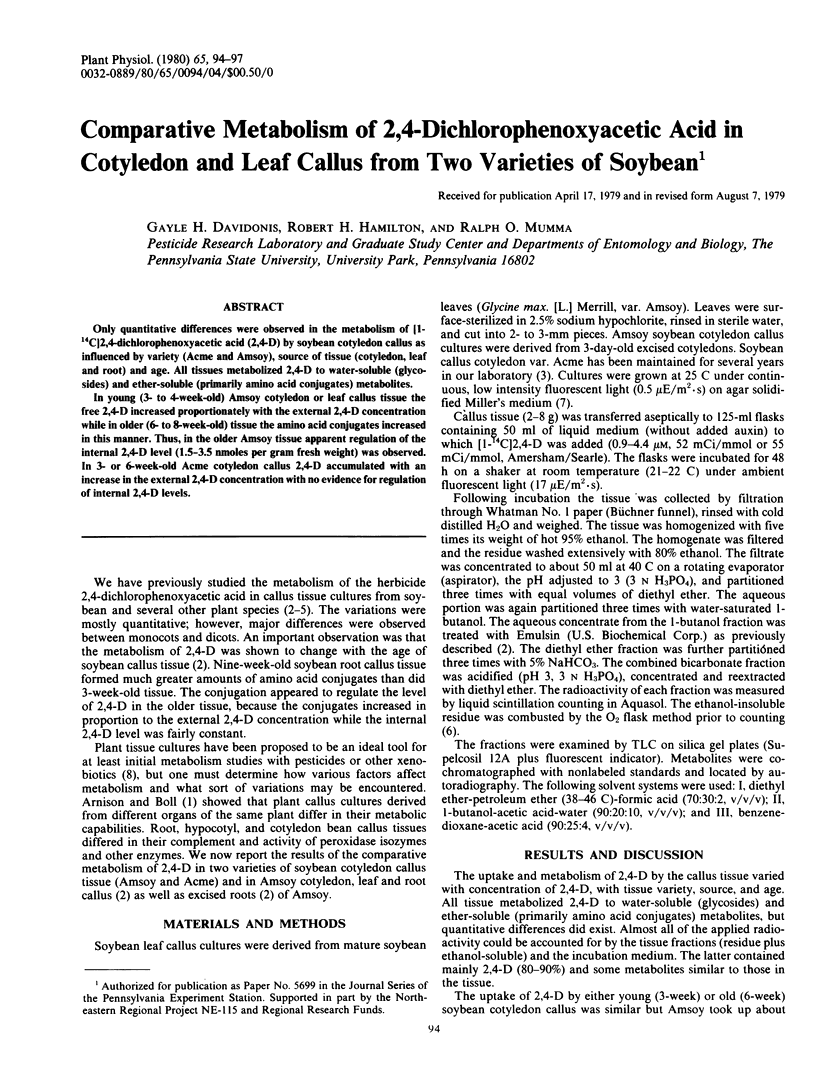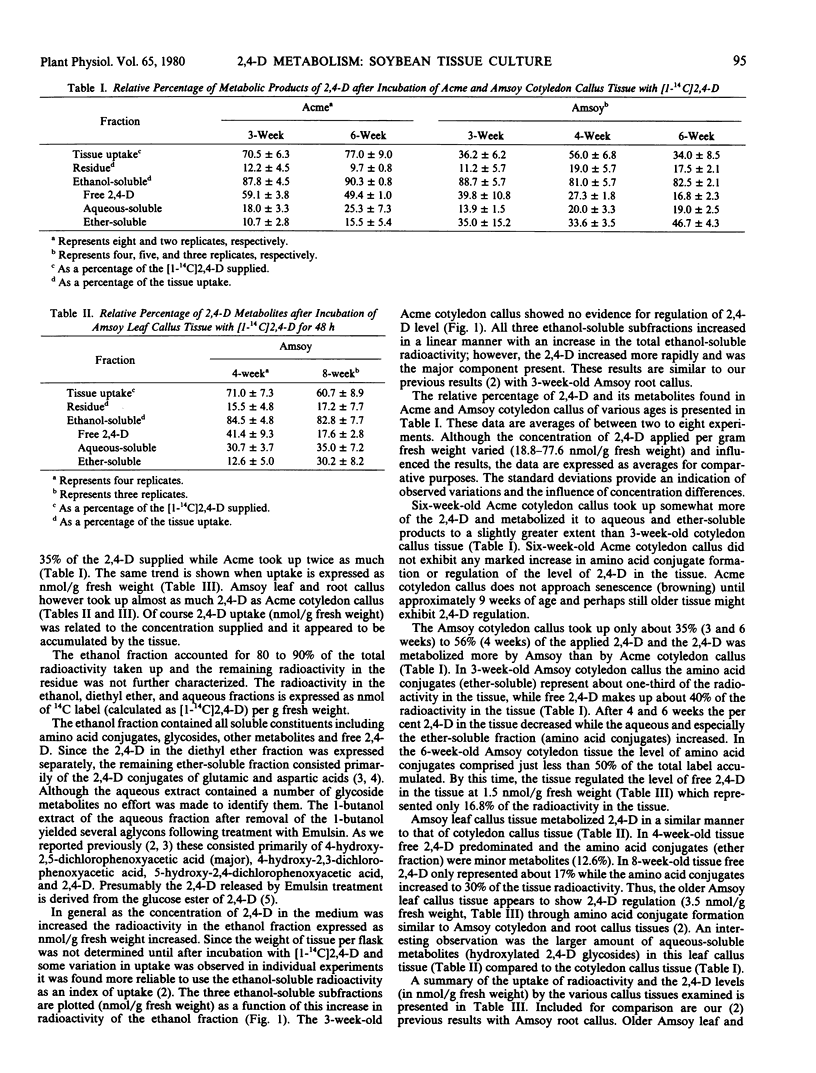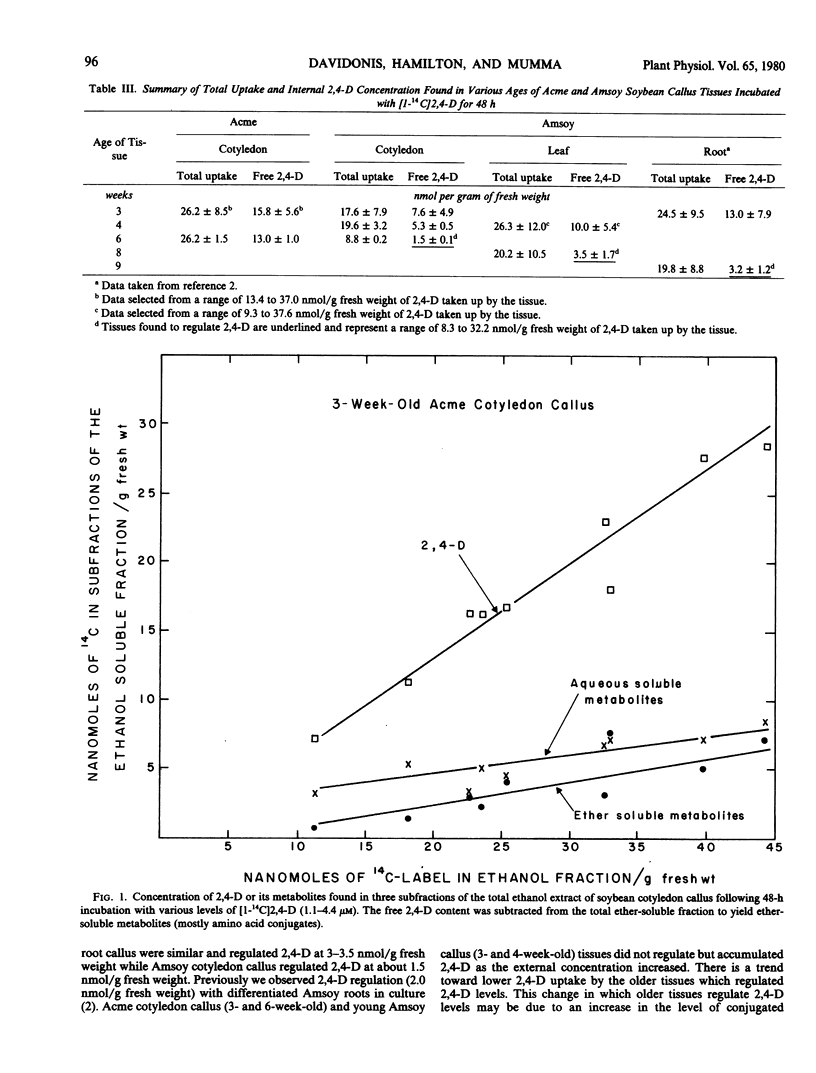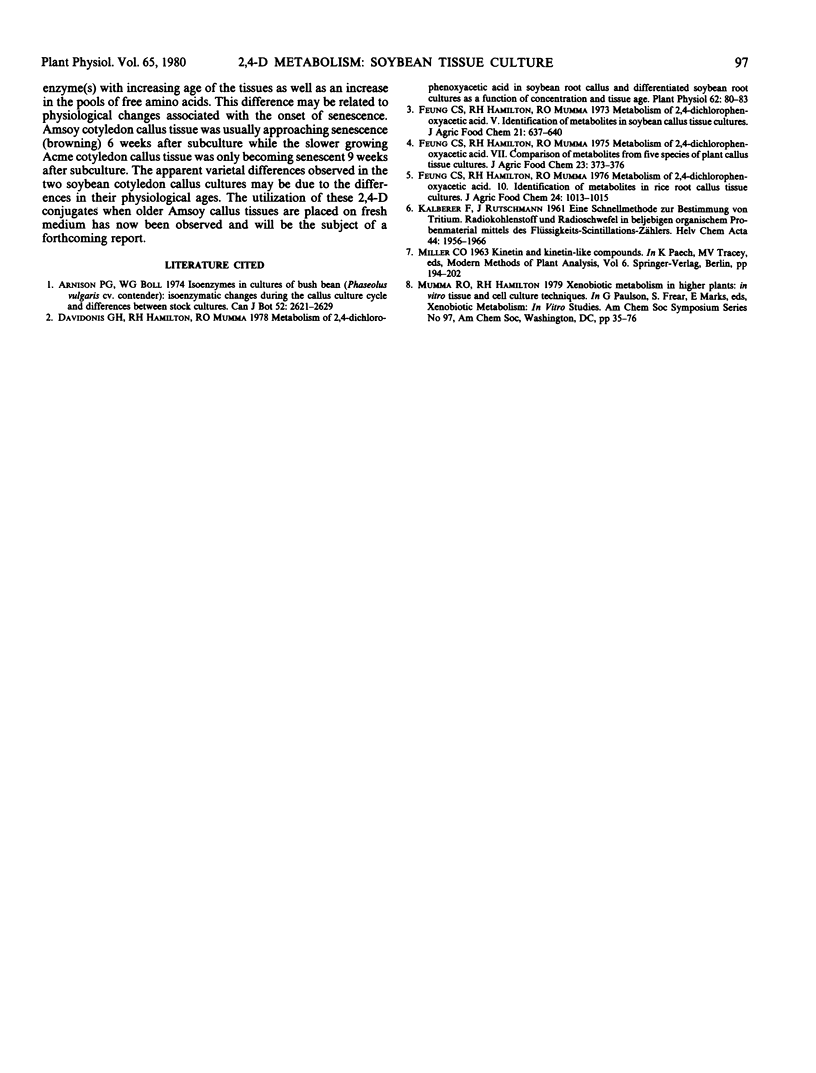Abstract
Only quantitative differences were observed in the metabolism of [1-14C]2,4-dichlorophenoxyacetic acid (2,4-D) by soybean cotyledon callus as influenced by variety (Acme and Amsoy), source of tissue (cotyledon, leaf and root) and age. All tissues metabolized 2,4-D to water-soluble (glycosides) and ether-soluble (primarily amino acid conjugates) metabolites.
In young (3- to 4-week-old) Amsoy cotyledon or leaf callus tissue the free 2,4-D increased proportionately with the external 2,4-D concentration while in older (6- to 8-week-old) tissue the amino acid conjugates increased in this manner. Thus, in the older Amsoy tissue apparent regulation of the internal 2,4-D level (1.5-3.5 nmoles per gram fresh weight) was observed. In 3- or 6-week-old Acme cotyledon callus 2,4-D accumulated with an increase in the external 2,4-D concentration with no evidence for regulation of internal 2,4-D levels.
Full text
PDF



Selected References
These references are in PubMed. This may not be the complete list of references from this article.
- Feung C., Hamilton R. H., Mumma R. O. Metabolism of 2,4-dichlorophenoxyacetic acid. 10. Identication of metabolites in rice root callus tissue cultures. J Agric Food Chem. 1976 Sep-Oct;24(5):1013–1015. doi: 10.1021/jf60207a011. [DOI] [PubMed] [Google Scholar]
- Feung C., Hamilton R. H., Mumma R. O. Metabolism of 2,4-dichlorophenoxyacetic acid. V. Identification of metabolites in soybean callus tissue cultures. J Agric Food Chem. 1973 Jul-Aug;21(4):637–640. doi: 10.1021/jf60188a058. [DOI] [PubMed] [Google Scholar]
- Feung C., Hamilton R. H., Mumma R. O. Metabolism of 2,4-dichlorophenoxyacetic acid. VII. Comparison of metabolities from five species of plant tissue cultures. J Agric Food Chem. 1975 May-Jun;23(3):373–376. doi: 10.1021/jf60199a065. [DOI] [PubMed] [Google Scholar]


